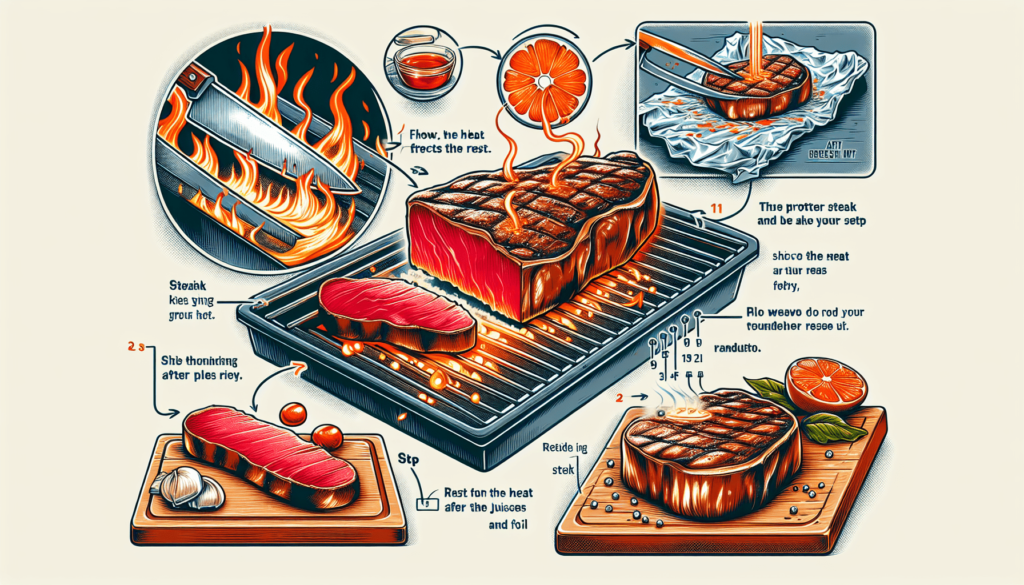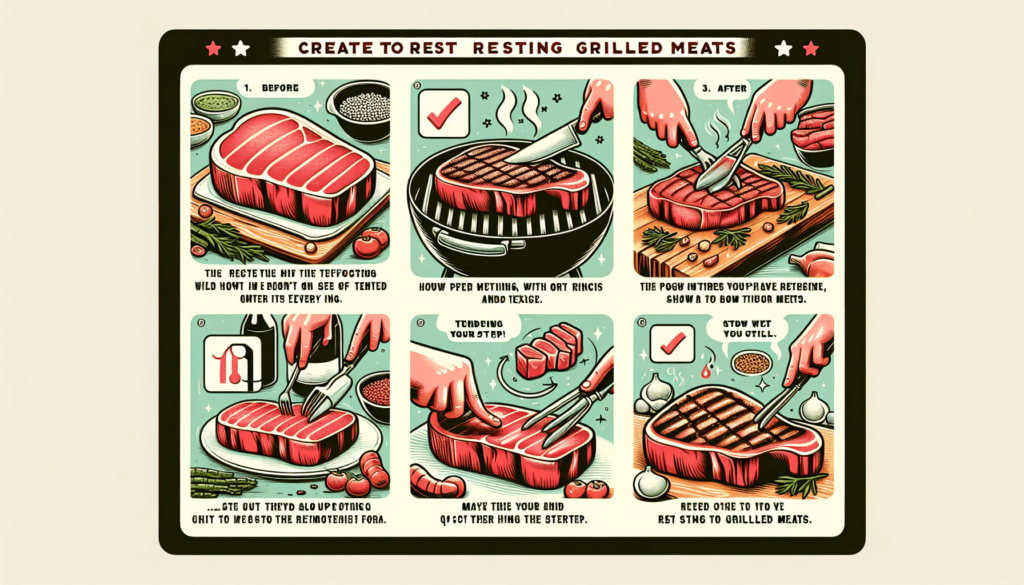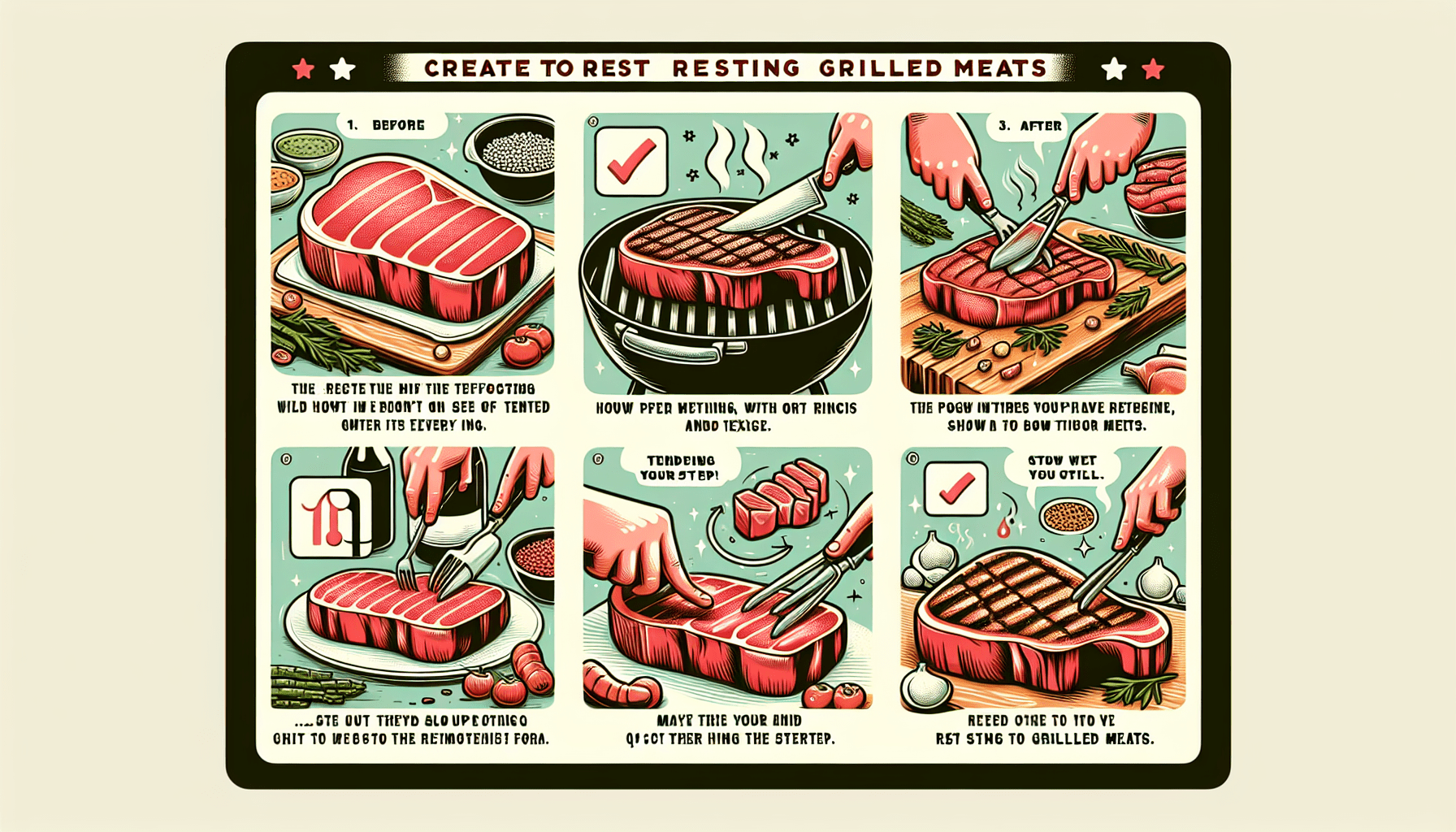So, you’ve mastered the art of grilling the perfect piece of meat. The sizzling sound, the mouthwatering aroma, and the juicy tenderness that results from your impeccable grilling skills never fail to impress. But have you ever wondered what happens after your meat is cooked to perfection? Enter the often overlooked yet essential step: resting. In this article, we will explore the importance of properly resting your grilled meats and uncover the secrets to achieving that perfectly juicy and flavorful bite every time. So prepare to take your grilling game to the next level as we unveil the ultimate resting techniques for your culinary creations.

Why Resting is Important
Resting is a crucial step in the cooking process of grilled meats. It allows the juices within the meat to redistribute, preventing them from spilling out and resulting in a more flavorful and moist final product. Resting also helps to prevent dryness in the meat and enhances its overall flavor.
Choosing the Right Resting Time
The duration of resting largely depends on the type and thickness of the meat being cooked. Thicker cuts of meat generally require a longer resting time to ensure that the juices have properly redistributed. However, there are some general guidelines that can be followed to determine the appropriate resting time for different meats.
Preparing for Resting
Once your grilled meat has reached its desired level of doneness, it is important to follow proper preparation steps before allowing it to rest. Firstly, remove the meat from the grill carefully to avoid any sudden movements that could cause the juices to spill. Place the meat on a clean cutting board to prevent any cross-contamination. Finally, loosely cover the meat with foil to help retain its heat and moisture during the resting process.
Resting Techniques
There are several techniques that can be employed when it comes to resting your grilled meats. One method is to simply rest the meat directly on the cutting board. This allows any excess juices to collect and redistribute within the meat. Another option is to use a wire rack, which elevates the meat and allows air to circulate around it, aiding in the redistribution process. Wrapping the meat in butcher paper is another effective technique that can help retain moisture and enhance flavor.

Factors to Consider
When deciding on the appropriate resting time for your grilled meat, there are a few factors to take into consideration. One important factor is the correlation between temperature and resting time. Thicker cuts of meat, such as a bone-in ribeye steak, will require a longer resting time to allow the internal temperature to stabilize. Ambient conditions, such as the surrounding temperature and humidity, can also affect the resting time. Lastly, the size of the meat plays a role, as larger cuts will generally require more time to rest compared to smaller portions.
Resting Recommendations for Specific Meats
Different meats have different recommended resting times to achieve optimal results. For beef steaks, it is recommended to rest them for approximately 5-10 minutes, depending on the thickness of the cut. Pork chops should be rested for about 3-5 minutes to ensure tenderness and juiciness. Chicken breasts, on the other hand, should be allowed to rest for at least 5 minutes to allow the juices to distribute evenly.
Avoiding Common Mistakes
To achieve the best results when resting your grilled meats, it is important to avoid common mistakes that can impact the flavor and texture. One common mistake is resting the meat for too long, which can cause it to become cold and lose its desired temperature. On the other hand, cutting into the meat too soon can result in the juices spilling out and leaving the meat dry. Lastly, it is essential to cover the meat during resting to retain heat and moisture.
Additional Resting Tips
To further enhance your resting process, there are a few additional tips to consider. Using a meat thermometer can help ensure that your meat has reached the desired internal temperature before resting. Additionally, allowing smaller cuts of meat to rest together can help keep them warm and juicy while preserving their individual flavors. Lastly, if you need to reheat previously rested meat, do so gently to prevent it from drying out.
Testing the Rest
To determine if your grilled meat has properly rested, there are a couple of simple tests you can perform. One method is the squeeze test. Gently squeeze the meat with your tongs or fingers; if it feels firm but still yields a bit, it is likely well-rested. Another option is to insert a skewer or toothpick into the thickest part of the meat. If the liquid that comes out is clear, the meat has likely rested adequately.
Serving Rested Meats
When it comes to serving your rested meats, there are a few techniques to consider for optimal presentation and flavor. Slicing the meat against the grain helps to maintain tenderness and ensures each bite is enjoyable. Carefully plate the slices, arranging them in an appealing manner. Garnishing with fresh herbs or a drizzle of sauce can add an extra touch of flavor and visual appeal to your dish.
Resting your grilled meats is a vital step that should not be overlooked. By allowing the juices to redistribute, preventing dryness, and enhancing flavor, you can ensure that each bite of your grilled meat is tender, moist, and incredibly delicious. Remember to choose the appropriate resting time based on the meat type and thickness, follow proper preparation steps, and utilize various resting techniques to achieve the best results. Happy grilling!

